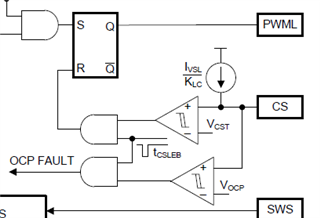Other Parts Discussed in Thread: UCC28C43, TL431
Hi Team,
I am designing a ACF Flyback Converter using the TI UCC28780 controller.
Currently, I am interested in the regulation loop of the controller. I would like to know more about the "control law" box that is inside the controller.
There is no detail in the datasheet and I need to know the transfer function of this box in order to draw the open loop transfer function. (Bode plot)
Could you please help me about this ?
Moreover, I would like to replace the optocoupler with an isolated digital amplifier ( like ADuM3190 or equivalent). Are there any special precautions to take ?
Thank you for your help.
Regards,
Maxime


